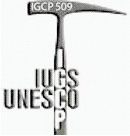Databases
 |
|
|
IGCP 509 project participants will use data from two databases, both of which are available from the IGCP 509 web site and from the database page of the Saskatchewan Isotope Laboratory (SIL). These databases are:
The IGCP509 database will form the principal mechanism to facilitate the construction of time-space correlation charts for the project. Details of how to construct the time-space correlation charts, utilising information in IGCP509 and DateView, are provided elsewhere. IGCP509 is a web-enabled extension of an earlier desktop system which captured information for lithostratigraphic units recognised by the South African Committee for Stratigraphy, with several enhancements specifically developed for the IGCP 509 project by Bruce Eglington, Steve Reddy and Dave Evans. Data are stored in a Firebird open-source relational database management system which provides full referential integrity. Although open-source, Firebird provides similar capabilities to major commercial database systems such as Oracle and is very easy to manage. The web interface to the database has been programmed by Bruce Eglington, using the Delphi language and Intraweb components. Data for the StratDB/IGCP 509 database have been provided by a number of organisations or have been captured from digital (GIS) geological maps. In particular, the Geological Survey of Canada has made available all it's world ore deposit database information. Only selected fields have been incorporated in StratDB but link fields are provided to the original compilations for those who require more detailed information. A few 'central' tables in the IGCP509 database contain essential information for each lithostratigraphic unit, structural domain, large igneous province or deposit. Other tables provide referential, look-up values or linkage fields to draw together information from various of the database tables. Contributors will need to populate certain essential information, but may also populate information in various of the supplementary data tables if they wish and have the time. The emphasis of the IGCP 509 project is on the Palaeoproterozoic and immediately time-adjacent time intervals (approximately 1500 Ma to 2600 Ma), but all information contributed will be available via the StratDB database. Obviously, the more information is provided, the greater the benefit will be to future researchers. Contributors may also choose to add data to the DateView geochronology database, in which case, provided that appropriate records exist in both the IGCP509/StratDB and DateView databases for the dated units, users will be able to see geochronological information associated with individual lithostratigraphic units and tectonic/metamorphic domains. Information on how to contribute to the DateView database is provided elsewhere. |
|
How data may be submitted
|
Data may be contributed to the IGCP509 / StratDB database in two ways:
|
|
| The first technique is the most robust in that it ensures that all referential integrity links are correct but is only applicable if the basic information is already in the database. It is most appropriate for small data sets. If you wish to contribute data in this way, you will need to email me with your database UserID so that I can give you permission to modify records. |
|
| The second technique is more convenient and faster for large data sets but requires more care from both the data compiler and the database administrator to ensure that there are no conflicts with data already in the database. Compilers will need to ensure that values entered in the spreadsheets are the same as referential integrity values already in the database (or will need to organise for new key values to be added). Users may download spreadsheet summaries of the main tables within IGCP509 / StratDB. Spreadsheet files, with columns suitable for most compilations, and a MicroSoft Access database file are also provided below. Please be sure to check what already exists in the database before compiling new information. If you have access to existing GIS shapefiles or coverages for an area, it is much easier to capture the information from the associated attribute tables than to start from scratch. A further advantage of this approach is that the unique ID's used for each unit in the GIS system may also be captured, so permitting those who have copies of the GIS files to link all attributes stored in StratDB to the polygons on the GIS maps. If you plan to follow this route, please contact Bruce Eglington for more details and assistance. |
|
Full details of the procedures to follow when submitting data are provided in a pdf. Templates (MicroSoft Access and MicroSoft Excel) are provided below. |
Main Submission Tables and Files
| Please do not make changes to the values stored in the various MSAccess look-up tables and don't change the structure or layout of the database tables and Excel spreadsheets. If you do, there is every chance that your data will not be compatible with everybody else's. If changes are required, please first discuss them with the IGCP 509 project leaders (Dave Evans, Steve Reddy and Rajat Mazumder) and with Bruce Eglington. Contact may be made via direct email contact or by using the IGCP 509 Google Newsgroup. If you are not sure of anything, please contact Bruce Eglington. It is much easier to sort it out at the beginning of a compilation than to make changes later. |


